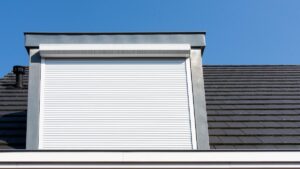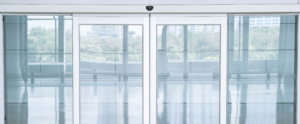

What are the disadvantages of aluminium doors?
- July 24, 2023
- admin

Aluminium doors have gained popularity in recent years due to their modern appearance, durability, and excellent performance in various weather conditions. They offer several advantages that make them a preferred choice for both residential and commercial properties. However, like any building material, aluminum doors also come with a set of disadvantages that potential buyers and homeowners should be aware of. In this blog, we will explore the drawbacks of aluminium doors to help you make an informed decision for your property.
Aluminum Doors: A Comprehensive Overview
Aluminum doors are an increasingly popular choice for residential and commercial buildings due to their versatility, durability, and sleek appearance. As the name suggests, these doors are primarily made from aluminum, a lightweight and corrosion-resistant metal. In this detailed explanation, we will delve into the various aspects of aluminum doors, including their composition, features, advantages, and applications.
Composition and Construction:
Aluminum doors are typically constructed from aluminum extrusions, which are created by forcing heated aluminum through a die to form specific shapes and profiles. The extrusions are then cut and assembled to create the door frames and panels. The frames may be hollow or filled with insulating materials for improved thermal performance, depending on the design and intended application.
Types of Aluminum Doors:
- Sliding Doors: Sliding aluminum doors feature two or more panels that slide horizontally along tracks. They are a popular choice for patio entrances and areas with limited space.
- Hinged Doors: Hinged aluminum doors swing open on hinges like traditional doors. They are commonly used for main entrances and interior rooms.
- Folding Doors (Bi-fold or Multi-fold): Folding aluminum doors consist of multiple panels that fold and stack against each other, creating a wide opening. These doors are ideal for connecting indoor and outdoor spaces seamlessly.
- French Doors: French aluminum doors have a classic design with two hinged panels that open outward or inward, providing a touch of elegance to any space.
- Revolving Doors: Revolving aluminum doors are used mainly in commercial buildings to provide a continuous entrance and exit flow while minimizing energy loss.
Applications of Aluminum Doors:
- Residential Buildings: Aluminum doors are commonly used as front doors, sliding patio doors, and interior doors in homes due to their durability and aesthetic appeal.
- Commercial Buildings: Aluminum doors are prevalent in commercial properties, including office buildings, hotels, restaurants, and retail stores, as they can withstand heavy foot traffic and provide an elegant entrance.
- Industrial Buildings: In industrial settings, aluminum doors are used for their durability, easy maintenance, and resistance to harsh environments.
- Educational Institutions: Aluminum doors are found in schools and universities due to their cost-effectiveness and ability to withstand the wear and tear of busy educational facilities.
Disadvantages of Aluminum Doors:
- Poor Insulation:
One of the significant disadvantages of aluminium doors is their poor insulation properties. Unlike materials like wood or uPVC, aluminium is a highly conductive metal. This means that it can readily transfer heat and cold between the interior and exterior of the building. In colder climates, aluminium doors can lead to heat loss, resulting in higher energy consumption and increased heating costs. Similarly, in hotter regions, they can allow heat to enter the building, making it more challenging to maintain a comfortable indoor temperature.
- Condensation Issues:
Due to the conductive nature of aluminium, these doors are more prone to condensation compared to other materials. When the outdoor temperature is significantly different from the indoor temperature, condensation can form on the surface of the door. This can lead to moisture-related problems, such as mould and mildew growth, which can be detrimental to the door’s appearance and structural integrity over time.
- Vulnerability to Scratches and Dents:
While aluminium doors are generally durable, they are susceptible to scratches and dents, especially in high-traffic areas or if not handled with care during installation or maintenance. Once a door is scratched or dented, repairing it can be challenging and may require professional assistance. Additionally, if left untreated, these blemishes can lead to corrosion, affecting the overall aesthetics of the door.
- Limited Aesthetic Options:
Compared to materials like wood, which offer a wide range of colours and finishes, aluminium doors have relatively limited aesthetic options. They can be powder-coated in different colours, but the variety is not as extensive as what is available with uPVC or other materials. As a result, finding the perfect match for your property’s architectural style and design may be more challenging with aluminium doors.
- Cost Considerations:
While aluminium doors are not as expensive as some premium materials like solid wood, they can still be pricier than other alternatives such as uPVC. The initial cost of aluminium doors, especially those with high-quality finishes and thermal breaks for improved insulation, can be a significant factor for budget-conscious buyers.
- Environmental Impact:
The production of aluminium requires a considerable amount of energy, making it less eco-friendly compared to some other materials. While aluminium is a recyclable material, recycling it also consumes energy. Those concerned about the environmental impact may prefer materials with lower carbon footprints.
Conclusion:
While aluminium doors offer numerous advantages, such as durability, low maintenance, and modern aesthetics, they also have some drawbacks that must be taken into consideration. The poor insulation properties, susceptibility to condensation, vulnerability to scratches and dents, limited colour options, and environmental impact are factors to bear in mind when choosing aluminium doors for your property. It’s essential to weigh these disadvantages against the benefits and determine whether aluminium doors align with your specific requirements and preferences. If energy efficiency and insulation are significant concerns, exploring alternative materials like uPVC or composite doors might be a more suitable option. Ultimately, making an informed decision will ensure that your choice of doors aligns with both your practical needs and aesthetic vision for your home or business.
FAQs (Frequently Asked Questions)
- Are aluminum doors suitable for coastal areas?
Yes, aluminum doors are well-suited for coastal areas because aluminum is highly resistant to corrosion and rust. Coastal regions often have high humidity and exposure to saltwater, but aluminum’s durability makes it an excellent choice for withstanding these conditions.
- Can aluminum doors be used for interior applications?
Absolutely. Aluminum doors are versatile and can be used for both exterior and interior applications. They are commonly used as interior doors for offices, commercial spaces, and modern residential designs, providing a sleek and contemporary appearance.
- Are aluminum doors energy-efficient?
- How do I maintain aluminum doors?
Aluminum doors are relatively low-maintenance. Regular cleaning with mild soap and water is usually sufficient to keep them looking clean and fresh. Avoid using abrasive or harsh chemicals that may damage the door’s finish.
- Are aluminum doors noisy when opening and closing?
Aluminum doors can produce some noise while opening and closing, especially if they are not properly lubricated or if they lack proper weatherstripping to reduce friction. However, noise levels can be minimized with proper installation and maintenance.
- Can I paint aluminum doors to match my home’s color scheme?
Unlike certain materials, such as wood, aluminum doors cannot be painted with standard paint. However, aluminum doors can be powder-coated in a wide range of colors and finishes during the manufacturing process, allowing you to choose a color that complements your home’s color scheme.
- Are aluminum doors secure?
Yes, aluminum doors can be highly secure when equipped with appropriate locks and hardware. Many aluminum doors are designed to meet industry standards for security and can be fitted with robust locking systems for enhanced protection.
- Can I get custom designs for aluminum doors?
Yes, aluminum doors offer design versatility, and many manufacturers offer custom design options. You can choose from various profiles, styles, and finishes to create doors that match your specific preferences and architectural requirements.
- Do aluminum doors require weatherstripping?
Yes, weatherstripping is essential for aluminum doors to ensure energy efficiency and weather resistance. Properly installed weatherstripping helps seal gaps between the door and the frame, preventing drafts, moisture, and noise from entering the building.
- Are aluminum doors eco-friendly?
Aluminum is a recyclable material, making aluminum doors an eco-friendly option. The recycling process requires less energy compared to producing new aluminum, making it an environmentally responsible choice for sustainable construction and design.
- Do aluminium doors corrode over time?
- Are aluminium doors noisy?
- Can aluminium doors be easily dented?





